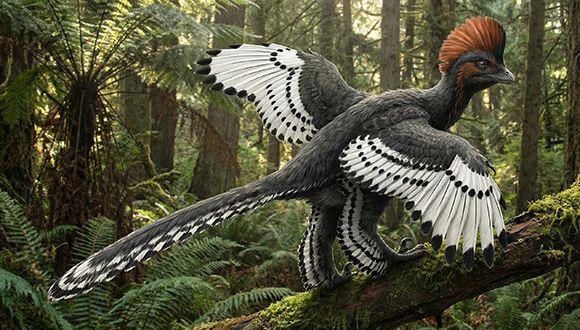TAU-led study uncovers how cancer cells disable the immune system


Research
A new TAU study reveals the emotional logic behind how we choose what information to face and what to avoid

A new study by Prof. Yaniv Shani of the Coller School of Management at Tel Aviv University and Prof. Marcel Zeelenberg of the Tilburg School of Social and Behavioral Sciences reveals a surprising insight into how we deal with information. Contrary to the common view that “willful ignorance” is primarily a way to avoid moral responsibility toward others, the study offers a much broader explanation: at times we avoid information — and at times we deliberately seek painful information — to regulate our own emotions and manage psychological overload.
According to the findings, many people delay receiving important information because they fear its emotional consequences. For example, many prefer not to check their medical test results before a vacation, or avoid looking at their investment portfolio during a market downturn. This avoidance does not stem from indifference, but rather from a desire to postpone the moment of emotional confrontation.
But alongside avoidance, the study points to an opposite behavior that serves the same emotional regulation mechanism: in situations of uncertainty, people actively seek painful information, even when it offers no benefit. For instance, consumers often check the prices of products they have already purchased, just to know whether they lost money — despite the fact that their initial decision cannot be undone. This phenomenon was especially evident after the October 7 attack in Israel, when many families sought to learn the fate of their loved ones, even when they knew the information might be devastating. In such cases, the pain of uncertainty seemingly outweighs the pain of knowing.
The study was published in the journal Current Opinion in Psychology. It presents a broad literature review in which the researchers examine recent empirical studies, alongside their own research on avoiding useful information and seeking information that serves no practical purpose. By comparing these patterns, they constructed a simple model based on two questions: Am I able to bear uncertainty? and Am I able to bear the truth? Their findings show that both behaviors — avoidance of information and information seeking — stem from the same emotional mechanism that attempts to regulate and balance between the fear of knowing and the pain of not knowing.
The researchers emphasize that this dynamic arises not only in social contexts, but also in moral situations in which individuals have to confront themselves. Sometimes people prefer “not to know” how their actions affect others, in order to avoid guilt. However, when avoiding information risks causing serious harm to others, it is the very inability to bear uncertainty that compels them to confront the truth.
The study offers a new way to understand the decisions people make in an information-saturated world: the desire to know and the desire not to know are not opposing forces, but two psychological tools intended to help us emotionally cope with threatening situations. For healthcare systems, public institutions, and organizations, this insight underscores the importance of how information is delivered — not only what is conveyed, but also how and when. We constantly navigate between the desire to know and the need to protect ourselves, weighing which option will hurt less: the truth or uncertainty. In an era where information is always within reach, the study highlights that what we know is not the only thing that matters — equally important is how we feel when we choose to know, or decide to remain in the dark.

Research
A Rare Discovery Sheds New Light on the Evolution of Flight

A new study led by a researcher from the School of Zoology and the Steinhardt Museum of Natural History at Tel Aviv University examined dinosaur fossils preserved with their feathers and found that these dinosaurs had lost the ability to fly. According to the researchers, this is an extremely rare finding that offers a glimpse into the functioning of creatures that lived 160 million years ago, and their impact on the evolution of flight in dinosaurs and birds.
The research team: “This finding has broad significance, as it suggests that the development of flight throughout the evolution of dinosaurs and birds was far more complex than previously believed. In fact, certain species may have developed basic flight abilities — and then lost them later in their evolution.”
The study was led by Dr. Yosef Kiat of the School of Zoology and the Steinhardt Museum of Natural History at Tel Aviv University, in collaboration with researchers from China and the United States. The article was published in Communications Biology, published by Nature Portfolio.
Dr. Kiat, an ornithologist specializing in feather research, explains: “The dinosaur lineage split from other reptiles 240 million years ago. Soon afterwards (on an evolutionary timescale) many dinosaurs developed feathers — a unique lightweight and strong organic structure, made of protein and used mainly for flight and for preserving body temperature. Around 175 million years ago, a lineage of feathered dinosaurs called Pennaraptora emerged - the distant ancestors of modern birds and the only lineage of dinosaurs to survive the mass extinction that marked the end of the Mesozoic era 66 million years ago. As far as we know, the Pennaraptora group developed feathers for flight, but it is possible that when environmental conditions changed, some of these dinosaurs lost their flight ability — just like the ostriches and penguins of today.”

160-million-year-old Anchiornis fossils
In the study, nine fossils from eastern China were examined, all belonging to a feathered Pennaraptoran dinosaur taxon called Anchiornis. A rare paleontological finding, these fossils (and several hundred similar ones) were preserved with their feathers intact, thanks to the special conditions prevailing in the region during fossilization. Specifically, the nine fossils examined in the study were chosen because they had retained the color of the wing feathers — white with a black spot at the tip.
Here is where feather researcher Dr. Kiat enters the picture, explaining: “Feathers grow for two to three weeks. Reaching their final size, they detach from the blood vessels that fed them during growth and become dead material. Worn over time, they are shed and replaced by new feathers - in a process called molting, which tells an important story: birds that depend on flight, and thus on the feathers enabling them to fly, molt in an orderly, gradual process that maintains symmetry between the wings and allows them to keep flying during molting. In birds without flight ability, on the other hand, molting is more random and irregular. Consequently, the molting pattern tells us whether a certain winged creature was capable of flight.”
The preserved feather coloration in the dinosaur fossils from China allowed the researchers to identify the wing structure, with the edge featuring a continual line of black spots. Moreover, they were able to distinguish new feathers that had not yet completed their growth — since their black spots deviated from the black line. A thorough inspection of the new feathers in the nine fossils revealed that molting had not occurred in an orderly process.

Dr. Yosef Kiat of the School of Zoology and the Steinhardt Museum of Natural History
Dr. Kiat: “Based on my familiarity with modern birds, I identified a molting pattern indicating that these dinosaurs were probably flightless. This is a rare and especially exciting finding: the preserved coloration of the feathers gave us a unique opportunity to identify a functional trait of these ancient creatures - not only the body structure preserved in fossils of skeletons and bones.”
Dr. Kiat concludes: “Feather molting seems like a small technical detail — but when examined in fossils, it can change everything we thought about the origins of flight. Anchiornis now joins the list of dinosaurs that were covered in feathers but not capable of flight, highlighting how complex and diverse wing evolution truly was.”